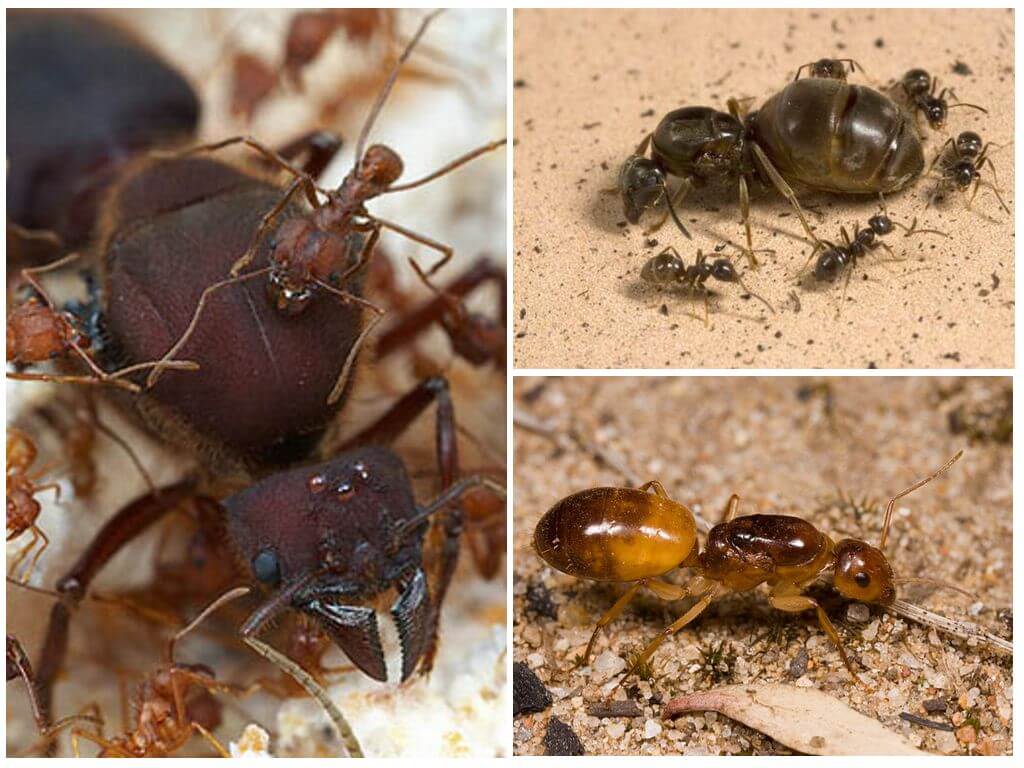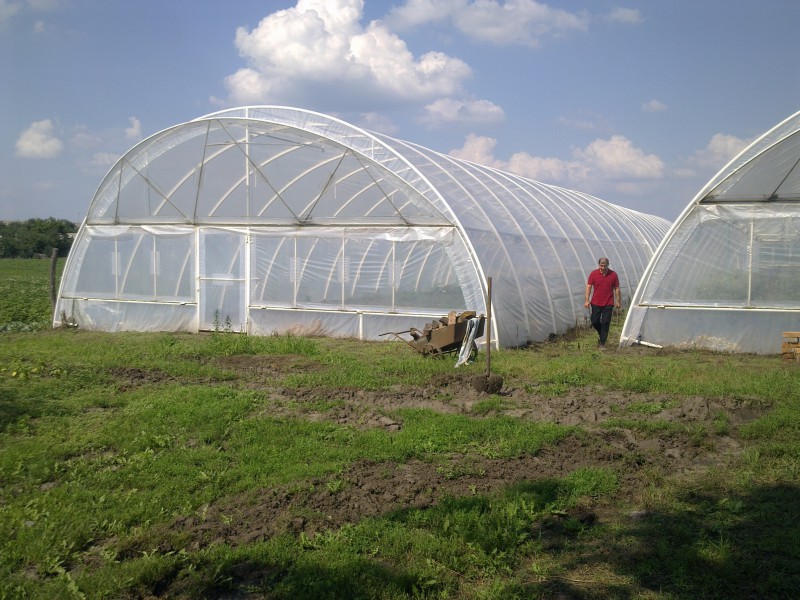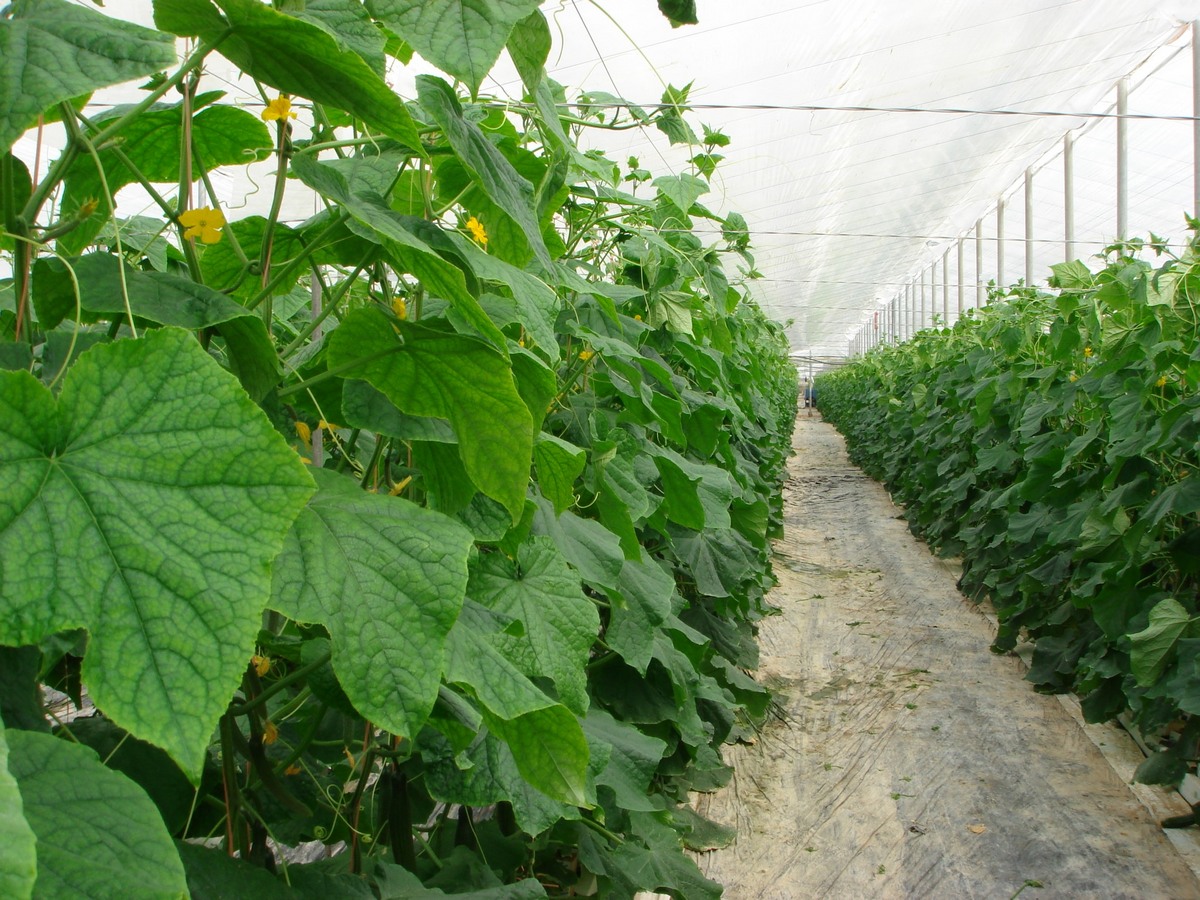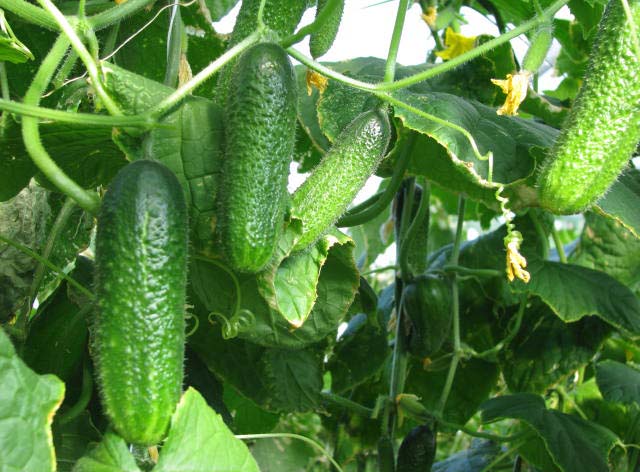Content:
To obtain an abundant high-quality harvest of cucumbers when cultivated in greenhouse conditions, it is necessary to timely protect the plantations from insect pests. Ants can especially harm cucumbers.
Growing cucumbers in a greenhouse
It is recommended to sow cucumber seeds for seedlings for greenhouses in late winter - early spring. To do this, you need to use a light crumbly soil and select a room with a high temperature. Under these conditions, it is possible to achieve the fastest germination and emergence of shoots. A month later, a full-fledged seedling is usually formed, ready for planting in a greenhouse.
Caring for cucumbers in greenhouse conditions involves watering, feeding with organic and mineral fertilizers, adjusting the temperature and humidity regime, forming a bush, etc. An important aspect of growing a crop in a greenhouse is its protection from diseases, weeds and pests. Ants are very dangerous representatives of the latter category. The question of whether ants can eat cucumber seedlings can be answered positively. Moreover, they can destroy an adult seedling.
Ant harm to cucumbers
In small quantities in the greenhouse, ants perform a number of useful functions: they loosen the soil, destroy ticks and other pests. However, these insects tend to multiply in greenhouse conditions at an incredible speed, occupying more and more space with their colonies. As a result, this leads to the following negative consequences for plants:
- Insects have the ability to release specific substances into the soil that increase the acidity of the soil. This is extremely harmful to most crops, including cucumber, which prefers moderately acidic soils.
- To maintain full-fledged vital activity, ants need a large amount of sugars, as a result of which insects can spread a significant number of aphids in the greenhouse. And this pest causes serious damage to cucumbers.
- Ants live not only inside the greenhouse, but also outside it. From open areas, they can bring weed seeds into the greenhouse, which will germinate and interfere with the normal growth of cucumbers and other crops.
- Ants devour seedlings and seed material of cucumbers, provoking their death.
- Insects are able to stick to adult, fully formed plants and suck out juices from them, disrupting the vital activity of the culture.
- Pests establish their nests in the middle of greenhouses, between cultivated plants, preventing them from fully developing.
Ants in cucumbers: how to get rid of
At the first signs of the appearance of insects in the greenhouse, it is necessary to take measures as soon as possible in order to remove them. In this case, mechanical, chemical methods, folk remedies and other methods of pest control are used. Ants in the cucumber garden: what to do?
Mechanical methods
If ants appear on cucumbers in the greenhouse, how to fight against them? First of all, it is recommended to resort to mechanical methods.They are the most simple, cost effective and environmentally friendly.
The most elementary method can be used if an anthill was found. The dwelling of the pests is taken on a shovel bayonet and carefully carried out of the greenhouse.
The effectiveness of this measure can be increased if, after digging, the soil is sprinkled with wood ash. If it is impossible to use it, it is allowed to resort to the use of baking soda.
If the ants ate the cucumbers and during the growing season it was not possible to get rid of the pests, at the beginning of the next season it is necessary to thoroughly treat the soil with a solution of 30 g of linseed oil and 5 g of baking soda, which are diluted in a liter container with water. This method is characterized by high efficiency, after such treatment the pests leave the greenhouse for a long time.
Chemicals
Fighting ants in a greenhouse with cucumbers in this way involves the use of certain baits, which, upon direct contact with ants, provoke death. A classic example of such a trap is a mixture that is prepared with the following ingredients:
- 4 teaspoons of fermented jam and sugar;
- 1 teaspoon boric acid
- glass of water.
Dissolve sugar, jam and acid in a glass of water and mix thoroughly. The mixture is installed in the morning in the places of the greatest concentration of ants, and by the evening it will be filled with drowned insects that will try to eat the treat. It is necessary to prepare a new solution every day.
To catch the queen ant, they use the following method: a plastic or metal tray or any other similar container is covered with a bulky piece of black cloth, abundantly saturated with sugar syrup. Insects, together with the so-called "queen of ants", will certainly climb onto the vessel, after which it will be possible to take the container with ants and throw it away from the greenhouse.
Do ants eat cucumber seeds?
Yes, ants eat seeds, to avoid this, it is necessary to pour a small amount of black or red pepper into the planting holes along with the seed material.
Folk remedies
Ants really hate strong smells. Their source can be dried plants, which should be decomposed in different parts of the greenhouse. The following plants are recommended:
- sagebrush;
- mustard;
- Bay leaf;
- garlic;
- anise.
Ants in a greenhouse with cucumbers: what to do? In addition to unfolding, certain plants with a specific aroma are allowed and grown directly in greenhouse conditions.
Next to cucumbers, you can sow crops such as:
- mint;
- marigold;
- nasturtium;
- rosemary;
- fennel;
- lavender;
- Melissa;
- catnip;
- parsley.
The most effective folk remedy for ant removal is garlic infusion. A few cloves of a vegetable are thoroughly kneaded and dissolved in a glass of water, letting it brew for a day. The resulting liquid is poured in places of mass accumulation of pests, which in the near future will lead to their exodus from the greenhouse, thanks to which it will be possible to protect the plantings.
If you find an anthill, it is recommended to sprinkle it with mustard powder directly from the bag or spill it with kerosene or boiling water.Spreading hot ash on the ant dwelling is considered a more effective method. First, it is necessary to stir it up a little to open access to the underground passages. Ashes will fall directly into these passages, which will cause the oxygen to shut off and the death of both adult insects and their eggs. When using this method, be careful not to accidentally burn the cucumbers.
Application of insecticides
In some cases, none of the above methods bring the expected effect, and summer residents have to resort to more effective methods involving the use of chemical pesticides.
When using these drugs, you should be careful, they can not only destroy ants, but also harm cucumbers and other cultivated plants. In case of inept work with insecticides in greenhouse conditions, their harmfulness can increase enormously. In this regard, it is recommended to resort to the use of these drugs only in cases where there is a real threat of the destruction of cucumber plants by ants.
Diazinon is the most harmful chemical to pests. When choosing a drug, it is necessary to ensure that the specified chemical compound is included in its composition. The most common and effective insecticides in this category are:
- Thunder-2;
- Ant-eater;
- Delicia;
- Muratsid;
- Ant;
- Expel.
Prevention
Fighting an infestation of ants is much more difficult than preventing them from appearing in a greenhouse. So that these pests do not start in the greenhouse, it is necessary to maintain it in an exemplary state. It is necessary to promptly remove garbage, old boards, scraps of roofing material from there, since ants often live among this trash. Old wooden greenhouse supports, which have begun to rot under the influence of time, can also become a refuge for pests.
Agricultural technology also affects the number of ants in the greenhouse. So, in conditions of regular watering and high moisture content, ants feel uncomfortable and often leave the greenhouse. However, here it is necessary to ensure that the humidity does not become too strong, as this is fraught with the development and spread of fungal diseases.
Pest control in the greenhouse allows you to preserve and increase the crop yield. During the collection of fruits, the work of the summer resident will be deservedly rewarded.


















